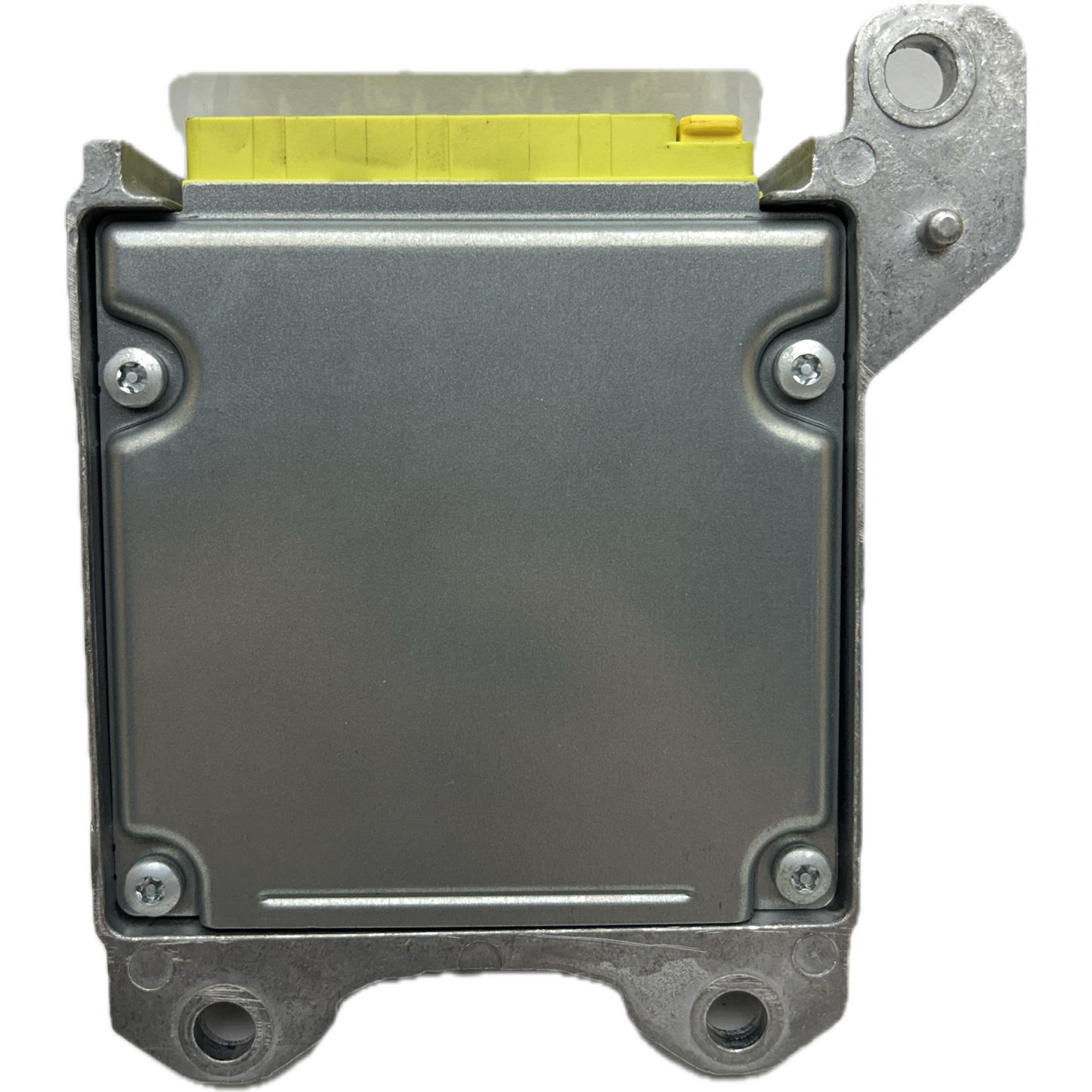What is a Mazda Mazda6 GH airbag control unit?
A Mazda Mazda6 GH airbag control unit is the central control unit of the safety restraint system (SRS) in your vehicle. It continuously monitors all airbag and seatbelt pretensioner sensors, stores relevant crash data after an impact, and is crucial for reliable airbag deployment in an emergency to provide maximum occupant protection.
This module processes signals from front, side, and optional rollover sensors to decide in milliseconds whether airbag deployment is necessary.
After an accident, the device stores the relevant crash data, which prevents it from being triggered again and makes repairs necessary to restore full functionality.
Why is the Mazda Mazda6 GH airbag control unit defective?
The Mazda Mazda6 GH airbag control unit often fails because it stores immutable crash data after an impact, which disables the system and activates the airbag warning light. Internal electronic errors, communication problems in the CAN bus, or voltage problems can also lead to failure, compromising vehicle safety.
A common reason for a defect is the storage of crash data after an accident, even if the airbags were not deployed.
Internal hardware errors or overvoltages can also damage the control unit, causing it to stop functioning or send faulty signals.
Communication problems with other control units in the vehicle via the CAN bus are also a cause of the airbag module failure.
Common error codes for Mazda Mazda6 GH airbag control unit repair
Mazda Mazda6 GH airbag control unit repairs typically involve communication errors and internal module defects, which manifest themselves as specific error codes. These codes indicate that the control unit itself is malfunctioning or unable to communicate with the diagnostic system and are crucial for an accurate diagnosis of the defect.
- C2011 | Communication error between the scan tool and the airbag control unit | Problem with the diagnostic connection.
- U0151 | CAN bus connection to the airbag control unit is faulty | Interruption of the data line to the module.
- U0001 | Communication bus error (Bus Off) | General failure of bus communication.
- U0073 | Control Unit Communication Failure | Internal or external control unit communication problems.
- U3000 | Control unit malfunction | Internal defect or malfunction of the airbag control unit.
- U3003 | Battery voltage outside the specified range | Undervoltage or overvoltage affecting the control unit.
- 44 | Error D-Sensor R (control unit specific) | Error in the context of the airbag control unit, not necessarily the sensor itself.
- 46 | Deactivation indicator light (flashing code) | Error that triggers the deactivation indicator light, often in the control unit.
- U303-17 | Control Unit Error (Specific) | A specific internal error of the airbag control unit in the Mazda6 GH.
What part numbers are available for the Mazda Mazda6 GH airbag control unit repair?
There are several specific OEM part numbers for the Mazda Mazda6 GH airbag control unit repair, which can vary depending on the year of manufacture and engine type. It is crucial to identify the exact part number of the installed module, as only compatible control units can ensure safe and correct operation of the airbag system.
- GDK457K30 | Mazda | Genuine OEM part number, suitable for Mazda 6 GH Diesel from 2010.
- GS3L57K30 | Mazda / Bosch | Genuine OEM part number, compatible with Mazda 6 GH 2009-2010 models.
- GS1D-57K30 | Mazda / Bosch | OEM part number, often attributed to Bosch 5WK43763, for Mazda 6 GH series.
- GMC857K30A | Mazda | Genuine OEM part number, listed for Mazda 6 SportBreak (GJ/GH/GL) 2.0 SkyActiv-G.
- GHP957K30A | Mazda | Genuine OEM part number, for later GH models or adjacent models from 2012 onwards.
Mazda Mazda6 GH Airbag Control Unit Technical Specifications and Compatibility
The Mazda Mazda6 GH airbag control unit is specifically designed for the second-generation Mazda6 (GH, model years approximately 2008-2012/2013) and is compatible with various engine variants, especially the 2.2-liter diesel. It serves as the central control unit for the entire SRS system, processing sensor data and precisely coordinating the deployment of airbags and seatbelt pretensioners.
The control unit is primarily designed for the Mazda6 GH sedan, sport and station wagon, especially for diesel engines such as the 2.2-liter R2 or MZR-CD.
Compatibility extends from model years 2008 to 2012, although later models such as GJ/GL often use different control unit variants.
It processes signals from various crash sensors (front, side) and can store crash data in the event of an accident that requires repair to deactivate the airbag warning light.
Mazda Mazda6 GH airbag control unit installation location and repair
The Mazda Mazda6 GH airbag control unit is typically located centrally in the vehicle, often under the center console, and is connected to all airbag components via special yellow-insulated wiring harnesses. A professional repair, including crash data erasure and troubleshooting, allows for a more cost-effective restoration of functionality than replacement.
The installation takes place inside the vehicle to ensure a protected and central position for sensor data collection.
Several connectors with gold-colored pins connect the control unit to airbags, belt tensioners and crash sensors.
Before removing or installing, the vehicle battery must be disconnected to prevent accidental airbag deployment and to ensure safety.
Important information about Mazda Mazda6 GH airbag control unit repair
Repairing the Mazda Mazda6 GH airbag control unit is safety-critical and always requires expert knowledge, as incorrect handling can lead to system failures or unintentional airbag deployment. After repair or replacement, VIN-specific coding or programming is necessary to ensure full functionality in the vehicle and prevent future errors.
There are different variants of the control unit, which require precise matching to the vehicle's chassis number.
A professional workshop should perform the repair or replacement to ensure maximum safety and system integrity.
Often, repairing the defective module, which involves deleting crash data and correcting internal errors, is a cost-effective alternative to purchasing a new one.






